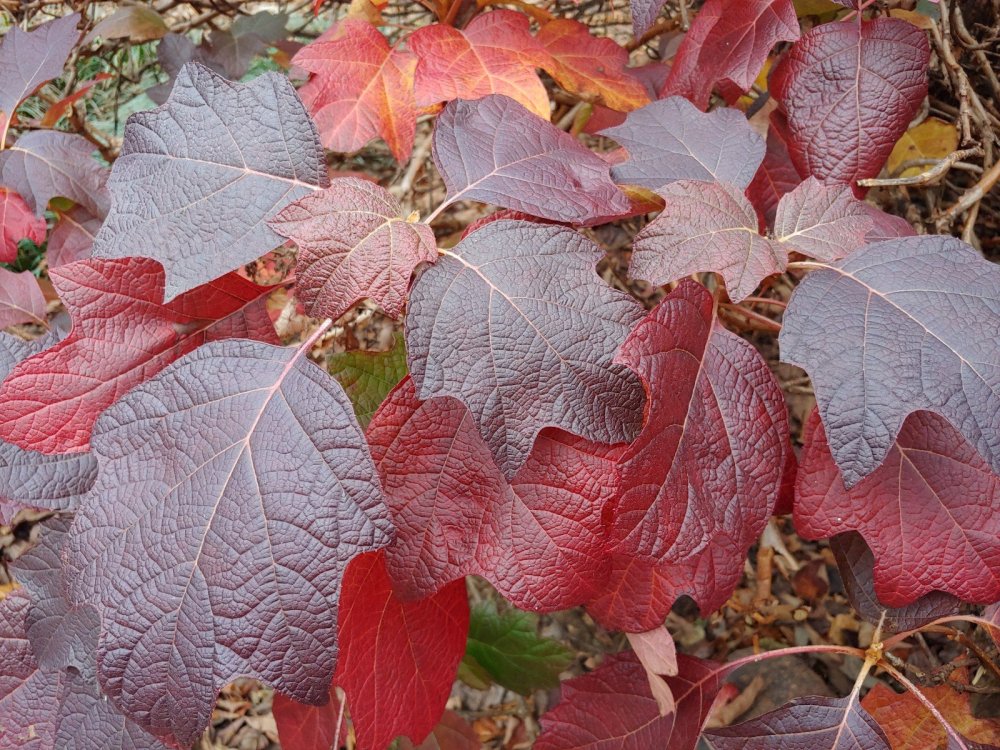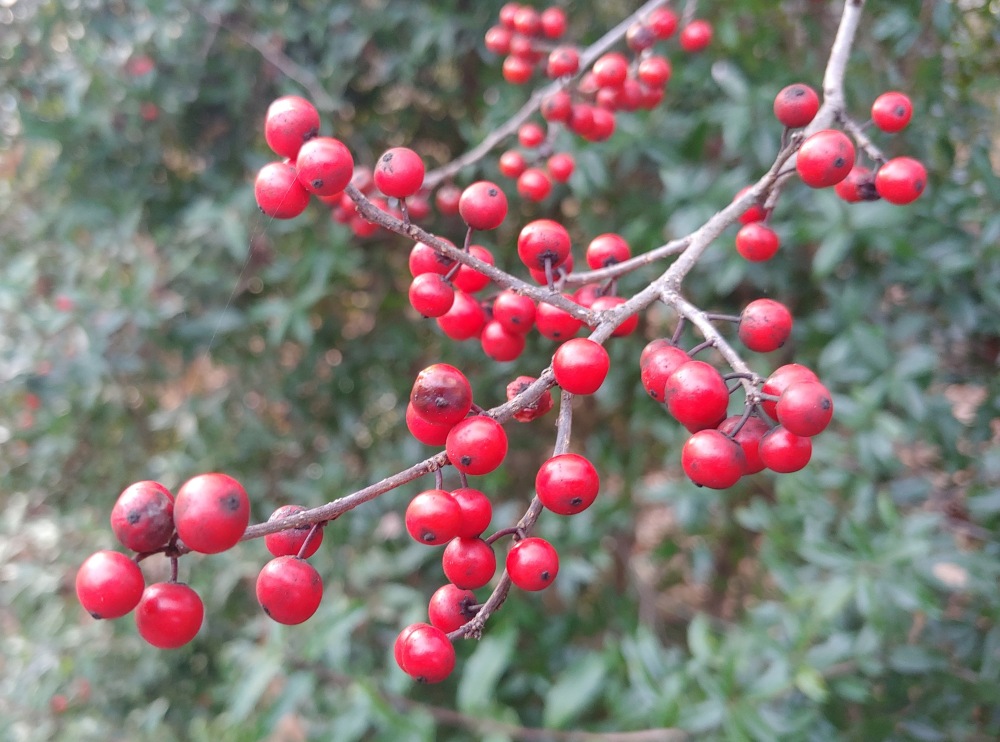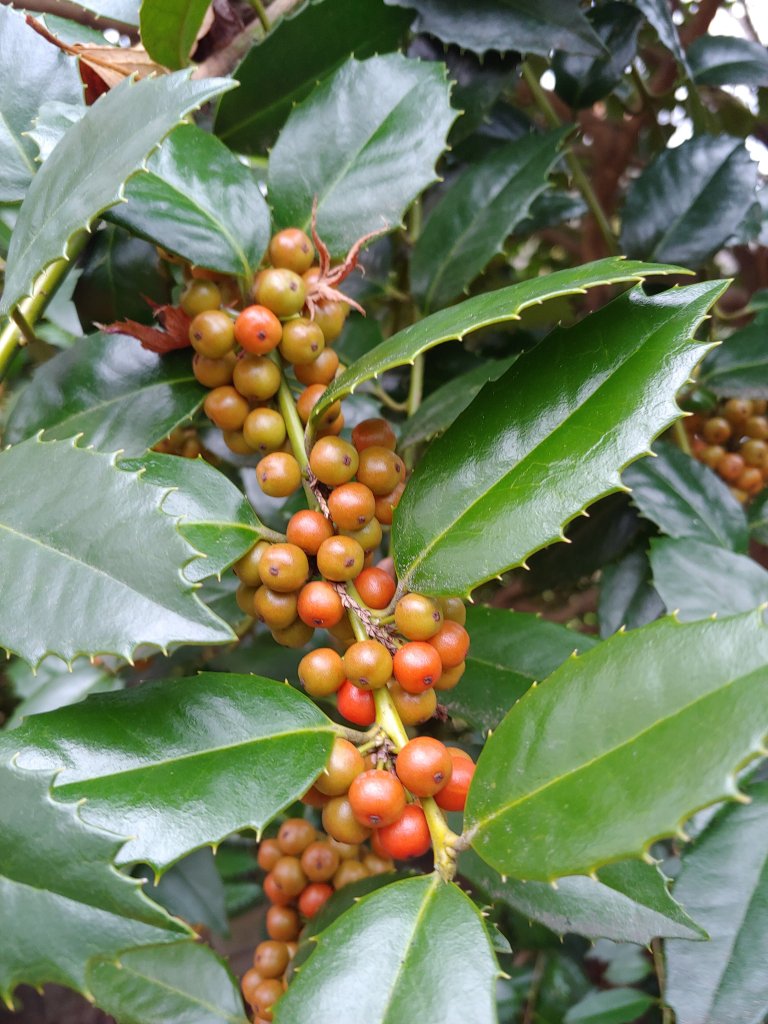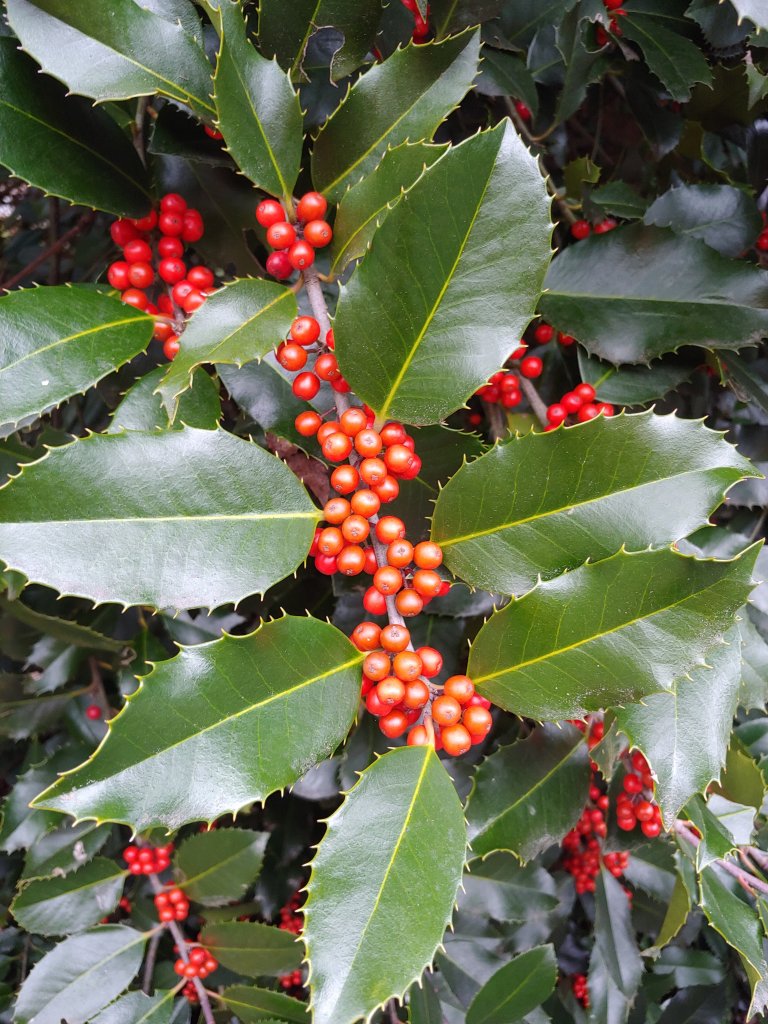Deer have nibbled burgundy leaves of several Oakleaf hydrangeas (Hydrangea quercifolia, below). Others are untouched and leaves will remain for weeks, often into the new year. With few leaves that haven’t fallen to carpet the garden, there is little harm in delaying the winter repellent spray, though deer recently sampled a newly planted dwarf Japanese aucuba. Broad leafed evergreens will soon be treated before deer move on to less favored foliage (aucubas and hollies) for winter snacks.

Leaves remain on only a single of the garden’s Japanese maples (Acer palmatum ‘Okushimo’, below). ‘Okushimo’ is unremarkable through most of the year, though its small, curled leaves are distinctive, but it remains green long after other maples have shed their leaves, then it colors when there is little other foliage color in the garden.


Birds have cleaned the last red berries from the dogwoods, but all but a few of the hollies are berried top to bottom. While berries on the deciduous ‘Winter Red’ hollies (Ilex verticillata ‘Winter Red’, above) will soon be gone, heavy crops will remain on the evergreen hollies (‘Mary Nell’ and Koehne hollies, below) through the winter.


I also have deer problem in my yard and would like to ask what do you use for the winter repellent spray? Is it something acting long-term? Thank you!
I’ve used several deer repellents with success. Best practice is to alternate repellents for a different taste/scent, so instead of using different products I now add a pepper sauce made for squirrels to Bobbex. For the winter spray I use a heavier concentration (one and half times) that is sprayed in early December. This typically holds until I start seeing new growth on perennials in the spring, when the next application is needed.
Thanks Dave! I will look into Bobbex as I haven’t used it so far.
I have been using my own concoction of milk mixed with putrescent eggs, garlic, hot peppers and peppermint oil. Unfortunately, just recently I found this information on the Audubon Society’s website: “Capsaicin is deadly to bees and other beneficial pollinators, so that is not something we promote spraying around our yards as an insecticide.”
https://www.audubon.org/birds/faq#t1441n9821
I will have to change my deer repellent recipe 😦
My primary concern with homemade concoctions is that they do not last as long as commercial mixes that often include stickers or latex so that they are effective for a month or longer despite regular rainfall. I do not spray any pesticides, and with the deer repellent I am careful not to spray flowers while bees are active. Most of the plantings I have that are favored by deer are in the shade, so these have many fewer bees.
I’m not as lucky, I have tons of daylilies and hostas so I should invent some new thing for next spring/summer, without capsaicin. And yes, some stickier solution would work better=longer. I guess I’ll have the entire winter to figure it out 😊
However, for the non blooming season I might try Bobbex. Last year the deer devoured even the new growth on our azaleas, they’re simply insatiable.
Thank you for all the tips 👍
Hi Dave, Thanks for the update on your lovely gardens. I am soon moving out of the city into the country and look to your blog for inspiration. I am in a 5b zone, so a lot of the plants don’t work for me, but I enjoy seeing your beauties!
You mention your winter spray for deer. Can you give me a name so I can be a step ahead? Many thanks,
Bridget
I’ve used several deer repellents with success. Best practice is to alternate repellents for a different taste/scent, so instead of using different products I now add a pepper sauce made for squirrels to Bobbex.
Beautiful pictures! My red maple trees are awesome!!
The day after I wrote this most of the leaves were knocked off in a heavy rain. The maples were great, but now all are nearly bare.
Holly berries are very sparse here. Until only recently, only female hollies were available from nurseries. I like the English holly for the foliage, but when I was a kid, did not know that they were supposed to produce berries too. I suspect that male hollies were used back when hollies were more fashionable. The English hollies that are naturalized at work produce a few berries, since the seed grown plants can be of either gender. A particular tree makes enough berries that I must harvest some for table decorations i the big dining room (except this year). However, even that particular tree does not produce much, perhaps because of the mode of pollination.
I would like to plant a tree in memory of my wife. It would be near a swimming pool, so all could see it. My budget is $350.00 and I would like to et it in before Christmas–do you have a recommendation?
Typically, the proximity to a pool requires a smaller tree so that shade and leaves blowing into the pool are minimized. Flowering trees such as dogwoods and redbuds, or a Japanese maple should be ideal.